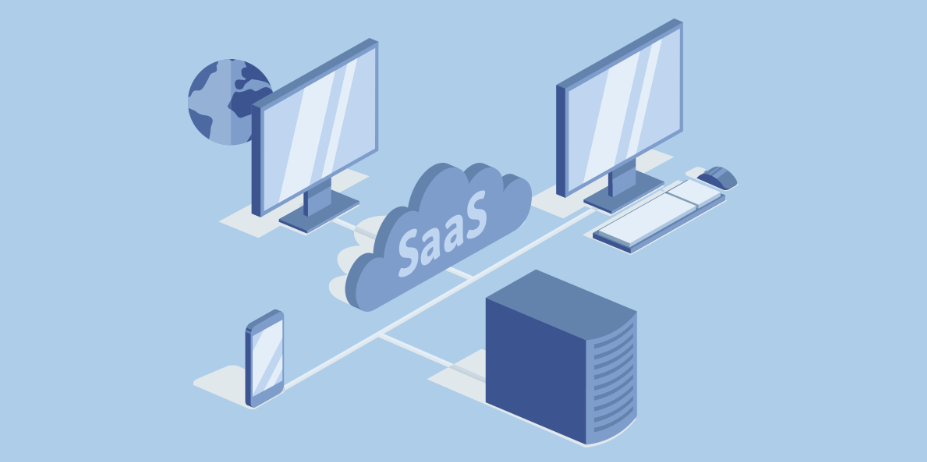What Is Software as a Service (SaaS) and What Are Its Benefits?

Although the Software as a Service (SaaS) business model is seen as a relatively new concept, the model of sharing computer software has been in play since the 1960s. At a time when computers were too expensive for most small businesses and organizations, the time-sharing model allowed multiple users at different terminals to access a particular computer system at the same time.
Fast-forward 50 years and, as computers have become more accessible and affordable, companies have looked for ways to access all the computer programs they need, but still manage costs. That has given way to the rise of SaaS, which began gaining traction around the turn of the millennium and today provides a variety of solutions for businesses.
SaaS provides a complete software solution that you can access from a cloud service provider and use via a pay-as-you-go approach. This allows companies to stop paying expensive single-use licensing fees on software and instead buy into a subscription licensing model.
Today, SaaS is so common that its applications include CRMs, customer service and support, business intelligence, analytics, e-commerce, finance and accounting, governance, human resources and much more. The rise of cloud computing not only has helped bring down the cost, it’s also made world-class software programs accessible to industries that could barely gain access to a terminal 50 years ago.
If your company hasn’t migrated to using SaaS, chances are good that you’re considering it. Here’s a look at how it works and what it can do for you.
Understanding How SaaS Works
While conventional software was provided as a file installed onto a user’s hardware, SaaS is on a hosted platform. This cloud-based approach means the user no longer has to be concerned about managing the hardware and software. Instead, the service provider is responsible for making sure it is secure and available.
For small business owners, this can be particularly beneficial for several reasons:
It reduces the cost and time for deployment, as users no longer have to install software on each piece of equipment using the software — or pay for multiple licensing uses. It lowers the risk of security threats and viruses since the provider is tasked with keeping it safe and up to date. It provides you with a known, accurate cost for as long as you have the agreement since you won’t be required to pay for support or maintenance on equipment.
Beyond all these advantages, however, SaaS can have a lasting, positive impact on your overall operations.
The Big Three: Flexibility, Scalability and Mobility
In most cases, you pay for SaaS like any other monthly bill. Rather than having a spike in your budget when you have to purchase new software or hardware, the SaaS model allows you to turn this into a recurring operating expense. For most small businesses, this helps with budgeting because it’s a fixed monthly fee, so it allows for better financial planning.
And, just as importantly, the SaaS model is designed with scalability in mind, allowing you to include more services or reduce the amount of service being used as your needs change.
For example, if you have a business that employs additional customer service contract workers for the busy holiday season, you can scale up for the duration of your busy weeks, then resume your normal level of service when the season ends and you trim back your workforce.
In today’s mobile workforce, it’s also important to have access to information and software solutions when you need them, wherever you need them. The mobile nature of SaaS means it has much greater accessibility than traditional, on-premise software. The SaaS model allows the services to be accessed from any compatible device, regardless of where it’s located.
Customized to Fit Your Needs
These days, your business depends on you being able to customize your software to suit your company’s individual business practices. SaaS encourages customization, allowing you to integrate applications as needed for your team and, as those needs evolve, to be able to build extensions to your network.
Staying Current at a Fraction of the Cost
Before SaaS, updating software or having your IT team make system updates could be a costly affair. With SaaS, the service provider is responsible for managing patches and making any updates to the software or system.
This also translates to being able to make upgrades more frequently while enjoying lower costs of adoption and greatly reducing any risk to customers.
If you want to remain competitive through leading-edge software — while at the same time curbing your operational expenses — SaaS could be the solution that helps you seamlessly move forward and get the results you’re looking for.
To find out more about what SaaS can do for you, reach out to our experts today at 1-855-AVENTIS or through our site, and let’s talk about what you’re looking for — and how we can help you find it.
Recommended Reading
|